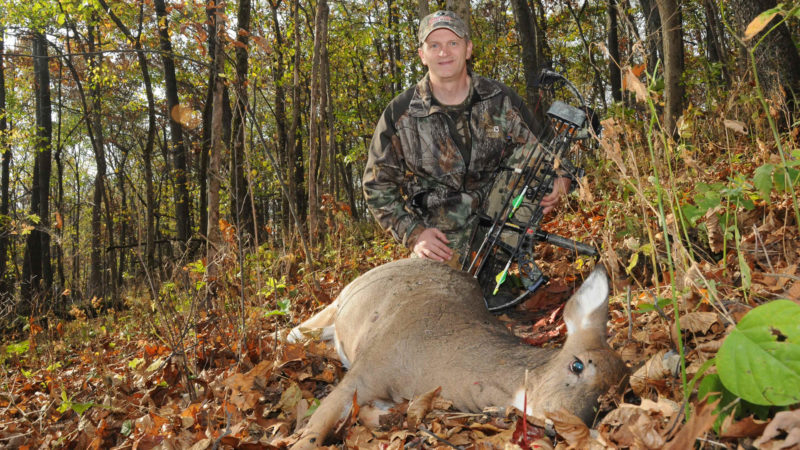Russia’s invasion of Ukraine in eastern Europe got me thinking of several bowhunts I took a few years ago with European archery-shop dealers who regularly visit the United States to pursue our elk and whitetails.
I also recalled hanging out with nine European bowhunters as they pursued whitetails in the oaks and sycamores of southwestern Mississippi one January. During those hunts, I wondered what they’d make of the complaints sessions that often erupt when most states convene elk or deer-management meetings.
After all, we’re forever arguing about deer quotas, cow-elk quotas, nonresident license prices, nonresident quota allocations, and whether crossbow hunters belong in the regular archery season.

When speaking with bowhunters from countries like Sweden, Aaland, Portugal, Denmark, Slovenia, Norway, and Finland, I felt spoiled. For instance, bowhunting isn’t legal for any bird or game animal in Sweden, Norway, Germany, Austria, Romania, Belgium, Bulgaria, or Great Britain. That might explain why only 20,000 of Europe’s 7 million hunters use archery equipment, with France accounting for about 14,000 of them.
In Denmark, bowhunting was banned in 1967 but reinstated in 1999 for roe deer, fox, hares and geese. But here’s the caveat: Bowhunters must pass a written exam and a proficiency test. Specifically, they must hit the vitals with five of six arrows on life-size targets of a deer, fox, duck, rabbit, goose and pheasant at unmarked ranges of 5.5 to 27.5 yards.
Germany, meanwhile, is discussing whether to allow archers to hunt small game, and Sweden’s environmental agency continues to study public attitudes toward bowhunting. Sweden’s gun hunters, for instance, view archery equipment as poaching tools.
Anders Gejer, an archery distributor from Holo, Sweden, and a past-president of the European Bowhunting Association, said he’s long been baffled how a poacher could use a bow and arrow to poach efficiently. Still, it’s a belief he commonly confronts at home. He even demonstrated a good understanding of America’s bowhunting traditions.
“Most of Europe requires a big educational effort,” Gejer said. “Sweden banned bowhunting in 1938, right about when Roy Case helped establish your country’s first archery season in Wisconsin (1934). That’s a long time to be without information about modern archery equipment, and that’s why North America has long been our best source for bowhunting information.”

Most Europeans hoping to bowhunt animals larger than roe deer, which are smaller than white-tailed deer, must look outside the Old World. To bowhunt elk, moose, bears, caribou, red stag, and other big game, they must fly to North America, New Zealand, and Australia. Travel costs alone make such trips rare.
“You have so much opportunity in North America, especially for bowhunting,” Gejer said. “The information from all your long seasons helps us argue for bowhunting in our countries. When we show that American bowhunters harvest about 1 million big-game animals every year, that demonstrates the bow and arrow must be effective.
“The wounding issue is also big in most of Europe, but again it’s a lack of knowledge,” Gejer continued. “With your country’s studies, and a five-year Denmark study that found a 5.6 percent bow-wounding rate on doe deer, we can show bowhunting is as good as other hunting methods.”
During a visit I attended with biologists from the Mississippi Department of Wildlife, Fisheries and Parks, the Europeans admired the agency’s scientific approach to deer management. “When we push for more bowhunting in our countries, we discuss the value of bowhunting as a tool for sustainable game management, and for improving ecological conditions and awareness,” Gejer said.
He said Europeans admire the North American model for wildlife management, which holds that fish and wildlife belong to the public and must be managed for the public’s benefit. They also envy our vast public lands.
“Your whole system is different,” Gejer said. “Anyone can buy a license and hunt state land. That doesn’t happen in Europe. We need a lease or we buy our way onto property by hiring a guide. Those are our only options.”
Still, Gejer stopped short of saying Americans take their abundant land and liberal hunting seasons for granted. “You’ve never had your opportunities taken away,” he said. “It’s all you know. It’s viewed as an undisputable right in your country.”

 By
By 



